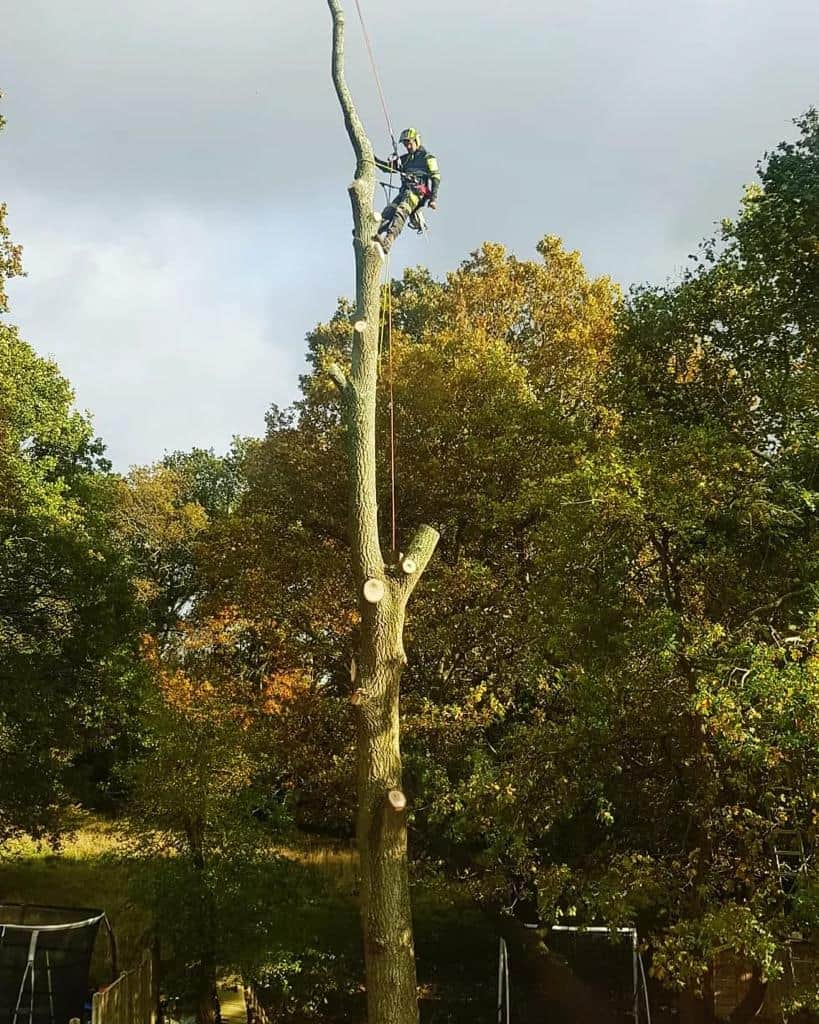Introduction
Trees play a vital role in our environment and in the overall beauty of our landscapes. In many cases, they provide shade, shelter for wildlife, and aesthetic value that’s hard to beat. However, there are times when removing a tree is not only sensible but essential for the safety, health, and integrity of your property.
At Red Lodge Tree Surgeons, we understand that the decision to fell a tree isn’t always easy. As experienced professionals serving Red Lodge and the wider Suffolk area, we’re often asked: “When is tree felling absolutely necessary?” In this guide, we’ll walk you through the key situations where tree removal becomes the right—and often only—option.
Key Takeaways
- Tree felling is necessary when safety, structure, or environmental health are at risk
- Dead, diseased, or unstable trees pose serious hazards to people and property
- Felling may be required to prevent damage to buildings, driveways, or underground systems
- In some cases, removal allows for healthier growth of surrounding plants or redevelopment of space
1. The Tree Is Dead or Dying
This is the most straightforward reason for tree felling. A dead tree not only loses structural integrity over time but becomes a serious safety hazard, especially during storms or high winds. Dead limbs can fall without warning, and the entire tree could collapse under its own weight.
Indicators include:
- No leaves in spring or summer
- Bark falling off in large sections
- Fungal growth at the base
- Brittle branches that snap easily
In these cases, removal is often the only safe course of action.
2. The Tree Is Seriously Diseased
While many tree diseases can be treated early on, some are too advanced or aggressive to manage. A diseased tree can quickly become unstable, hollow, or contagious—posing a threat to nearby trees, plants, and even humans or animals.
Common signs include:
- Cankers or oozing wounds
- Sudden dieback in branches or crown
- Discolouration of leaves or premature leaf fall
- Large fungal growths (e.g. honey fungus)
In such cases, felling the tree helps prevent further spread and ensures the safety of your landscape.
3. Structural Damage or Dangerous Lean
Trees growing too close to buildings, walls, or driveways can cause significant structural issues. Root systems may disrupt foundations, lift paving, or damage drainage pipes. If a tree begins to lean suddenly—especially after high winds or heavy rainfall—it could be an indication of root failure or internal decay.
Some high-risk scenarios include:
- Trees leaning towards homes, roads, or public footpaths
- Cracks forming in nearby structures or concrete
- Roots surfacing or appearing around drains and foundations
Tree felling in these situations is not just precautionary—it’s often urgently needed to prevent property damage.
4. The Tree Is Obstructing Development or Use of Space
While we always prioritise tree preservation where possible, there are times when a tree simply stands in the way of progress. If you’re planning an extension, garden redesign, or new structure, a poorly placed tree can limit your options or interfere with planning permissions.
Examples include:
- Trees overshadowing solar panels or windows
- Mature trees occupying potential build zones
- Restricted access to driveways or outbuildings
In such cases, removal can enable more practical and beneficial use of your land, especially when followed by thoughtful replanting elsewhere.
5. The Tree Has Outgrown Its Location
Some trees grow far larger than homeowners expect. Over time, they may overshadow gardens, block light to rooms, or affect nearby planting beds. Excessive size can also mean more falling debris, increased risk during storms, and ongoing pruning costs just to maintain a safe shape.
When a tree becomes too large to safely manage—particularly in confined spaces—felling may be the most efficient long-term solution.
6. The Tree Is Unsafe After Storm Damage
Storms can wreak havoc on even healthy trees. Sudden limb loss, crown damage, or uprooting often leaves a tree unstable. In such cases, attempting to save it could pose a greater risk than removal.
We’ve seen this often in Red Lodge and across Suffolk, especially after strong winds. If more than 50% of the crown is damaged, or the main trunk is split, complete felling is usually the safest route.
Conclusion
Tree felling is not a decision to be taken lightly—but in certain situations, it’s both necessary and responsible. Whether it’s protecting your home, preventing the spread of disease, or making way for new development, removing a tree can often benefit the wider landscape.
At Red Lodge Tree Surgeons, we’re committed to providing honest advice and professional service. If you’re unsure whether a tree on your property needs to be removed, get in touch with our expert team today. We’ll carry out a thorough assessment and recommend the safest, most sustainable course of action.
Call us on: 01638 591 675
Click here to find out more about Red Lodge Tree Surgeons
Click here to complete our contact form and see how we can help with your tree care needs.

